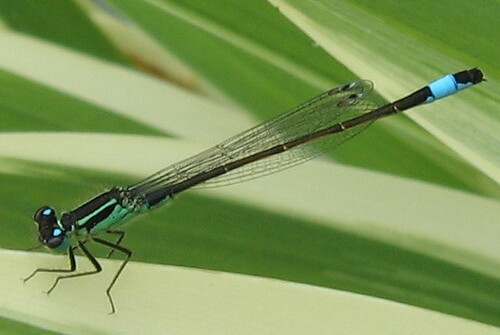
Category: Nature
Flies, flies and more flies.
Someone posted this photo of a scorpionfly to the Flickr group ID Please:
Which reminded me of something I said a week or so ago.
I take a casual interest in insects and other invertebrates, but one thing you quickly realise is that they’re really hard. I first really appreciated this when, quite pleased with myself for recognising something as a ’scorpionfly’, I tried to look it up in a book and discovered there are something like 28 species just of scorpionflies in the UK.
Well, it turns out I was misleading you. There are only four species of scorpionfly in the UK. There are however 51 species of mayfly, 33 species of stonefly, and 189 species of caddisfly. And 158 species of thrip, 627 lice, 1709 bugs, 2400 species of butterfly or moth, 3900 beetles and 6900 true flies. Notice the numbers start getting suspiciously round for the bigger groups.
What I find staggering about these numbers (from Buglife) is that it implies there are so many different evolutionary niches available for such apparently similar creatures. Even the 51 species of mayfly are slightly mind-boggling, but how can there possibly be 6900 different ways of successfully being a fly?
I guess a lot of insects are specialised to a particular food source – for example most caterpillars only eat specific food plants and parasites usually have specific hosts, whether animal or plant. So that means every plant or animal species is in turn a potential opportunity for yet another species of insect.
I wonder how useful the lanaguge of ‘niches’ is anyway. It rather implies that each niche can only hold one species, that if two species are in direct competition for the same resources, one of them must inevitably lose out. I don’t know if that’s necessarily true; for example, if two geographically separated populations of a species evolved to look different, so that they would no longer interbreed, but kept living in essentially the same way (filling the same niche), and then the two populations mixed again, would one inevitably out-compete the other, or might they just live alongside one another?
Perhaps usually, the niches wouldn’t be quite identical anyway, and would just be heavily overlapping – the two species would be competing for some things but not others. Does that make a difference? Does it make it more likely that they would achieve a stable mixed population? I don’t know.
I assume evolutionary theorists have thought about these issues; I don’t know what conclusions they’ve reached.
Another damselfly
Also available super-big on Flickr
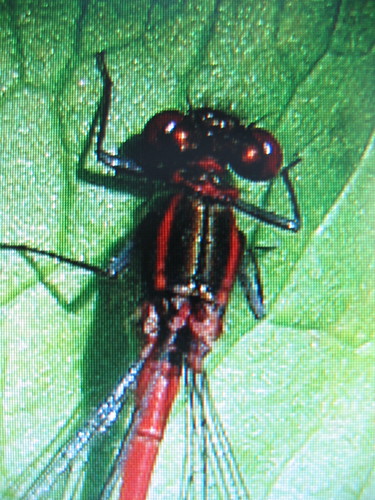





Damselflies
It’s remarkable how many different insect species there are around if you go and look, and notice the various colours and sizes instead of just thinking ‘butterfly’ or ‘bumblebee’. Damselflies are the smaller, more delicate relatives of dragonflies. There were at least three species, and possibly four, in the garden today. I got pictures of some of them. This is a Large Red Damselfly:
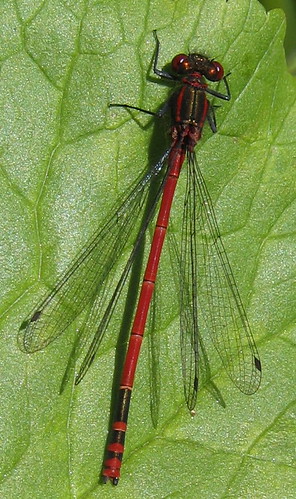
A Common Blue An Azure Damselfly:
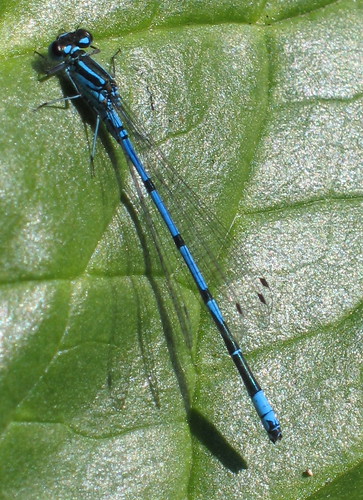
I’ve always assumed this one, which has distinctive grey/silver wings, was a different species, but looking around on Google it may possibly be an alternative colour form of the female Azure:
EDIT: apparently grey wings are typical of newly hatched dragonflies – ‘teneral’ in the jargon – so this is probably a teneral Azure Damselfly.
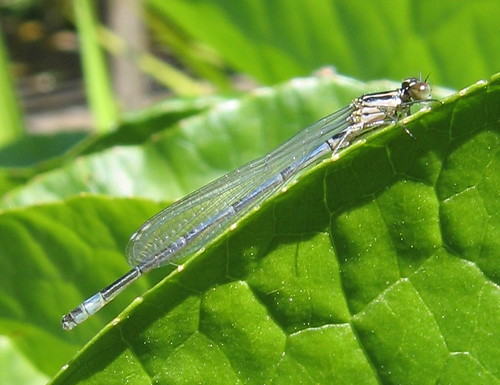
Pretty, aren’t they.
As well as those, and the Blue tailed Damselfly which I didn’t get a photo of, I’ve also seen at least one other species in the garden in the past – the Red Eyed Damselfly. And that’s without counting the ‘proper’ dragonflies.


